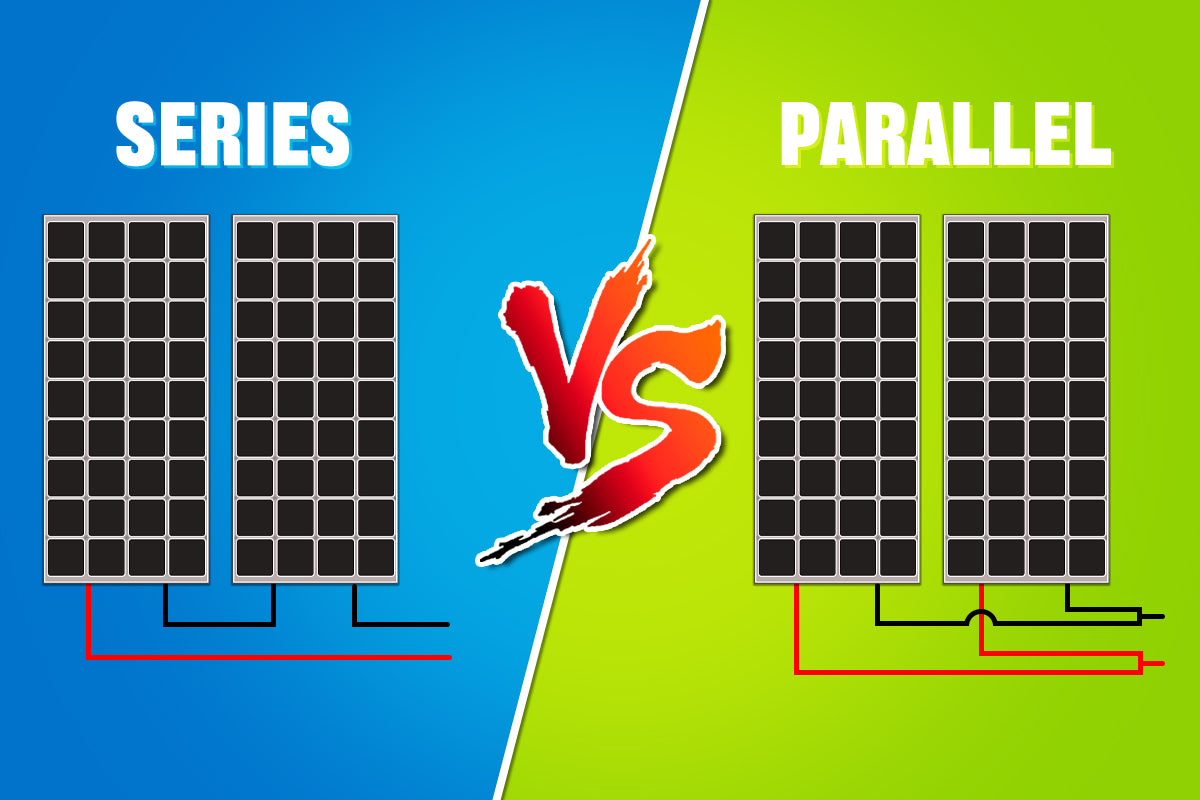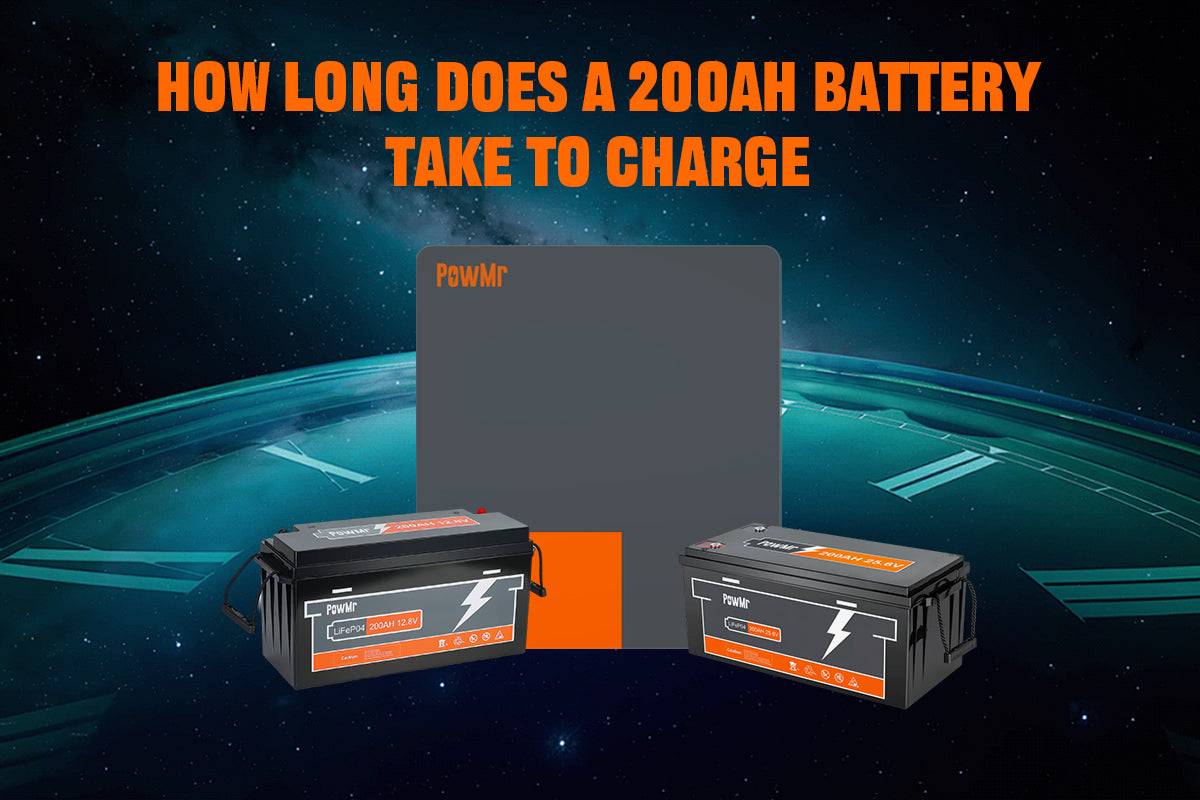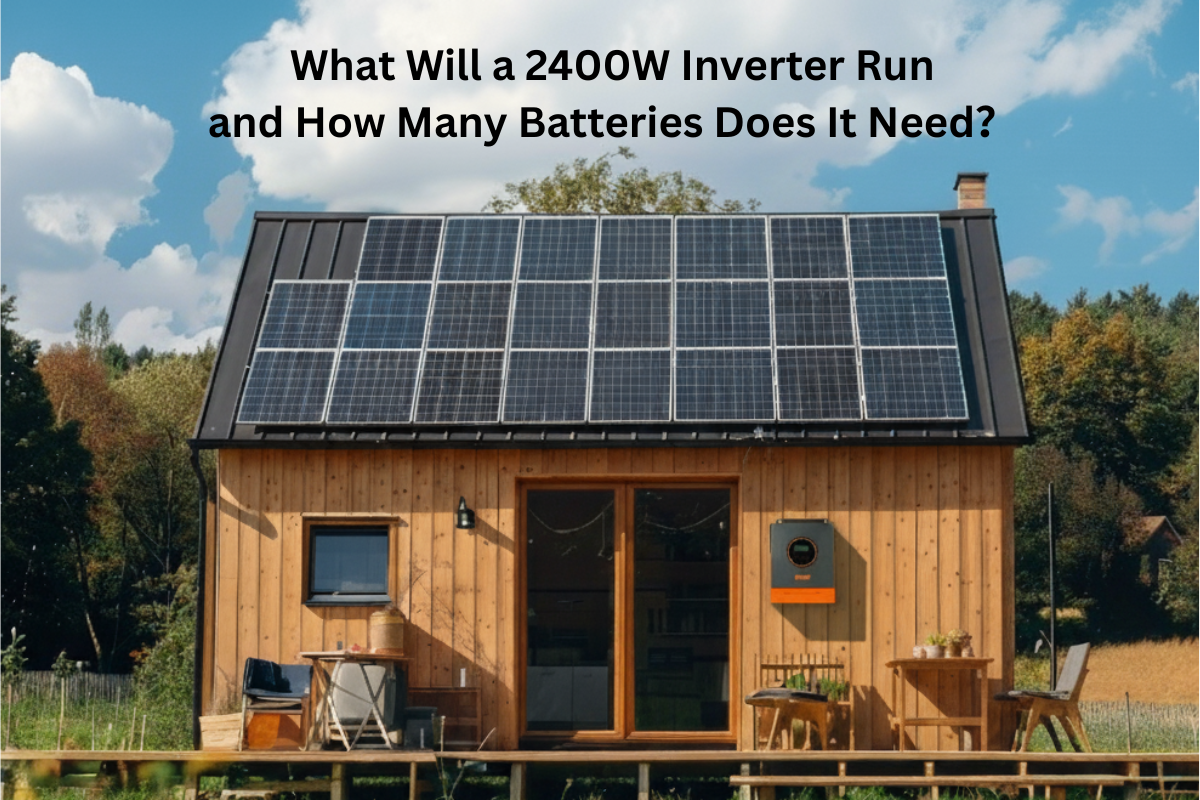การเข้าใจวิธีเชื่อมต่อแผงโซลาร์เซลล์อย่างเหมาะสมอาจเป็นเรื่องซับซ้อน โดยเฉพาะสำหรับผู้เริ่มต้น ด้วยตัวเลือกและปัจจัยมากมาย กระบวนการเชื่อมต่อแผงโซลาร์เซลล์เพื่อใช้พลังงานจากดวงอาทิตย์อย่างมีประสิทธิภาพอาจดูน่ากลัว
คู่มือฉบับสมบูรณ์นี้อธิบายความแตกต่างพื้นฐานระหว่างการเดินสายแบบอนุกรมและขนาน ครอบคลุมถึงผลกระทบต่อแรงดันไฟฟ้า กระแสไฟฟ้า ความทนทานต่อเงา และความซับซ้อนของการเดินสาย รวมถึงข้อมูลเชิงลึกเกี่ยวกับการตั้งค่าฮาร์บริดที่ผสมผสานทั้งสองวิธีเพื่อเพิ่มความยืดหยุ่นและประสิทธิภาพ ช่วยให้ผู้ใช้ตัดสินใจได้อย่างมีข้อมูลสำหรับการติดตั้งโซลาร์เซลล์ของตน
- พื้นฐานของแรงดันไฟฟ้าและกระแสไฟฟ้าในระบบโซลาร์เซลล์แบบอนุกรมและขนาน
- การเดินสายแผงโซลาร์เซลล์แบบอนุกรม
- การเดินสายแผงโซลาร์เซลล์แบบขนาน
- การเดินสายแผงโซลาร์เซลล์แบบอนุกรมและขนาน
- แผงโซลาร์เซลล์แบบอนุกรมกับแบบขนานในความซับซ้อนของการเดินสาย
- แผงโซลาร์เซลล์แบบอนุกรมกับแบบขนานในสภาวะมีเงามืด
- แผงโซลาร์เซลล์แบบอนุกรมกับแบบขนานในเรื่องประสิทธิภาพ
- แผงโซลาร์เซลล์แบบอนุกรมกับขนาน - ข้อดีและข้อเสีย
พื้นฐานของแรงดันไฟฟ้าและกระแสไฟฟ้าในระบบโซลาร์เซลล์แบบอนุกรมและขนาน
ไม่ว่าคุณจะเชื่อมต่อแผงโซลาร์เซลล์แบบอนุกรมหรือขนาน กำลังไฟฟ้ารวมจะเท่าเดิม สิ่งที่สำคัญจริงๆ สำหรับการออกแบบระบบคือวิธีที่แรงดันไฟฟ้าและกระแสไฟฟ้าเปลี่ยนแปลงตามแต่ละรูปแบบ
การเข้าใจพฤติกรรมของแรงดันไฟฟ้าและกระแสไฟฟ้าในรูปแบบการเดินสายต่างๆ ช่วยให้คุณตัดสินใจอย่างชาญฉลาดเกี่ยวกับขนาดแผงโซลาร์เซลล์ การจับคู่กับอินเวอร์เตอร์ และความเข้ากันได้ของตัวควบคุมการชาร์จ เมื่อคุณกำหนดได้แล้วว่าคุณต้องการพลังงานแสงอาทิตย์กี่วัตต์
การเดินสายแผงโซลาร์เซลล์แบบอนุกรม
การเชื่อมต่อแผงโซลาร์เซลล์แบบอนุกรม ส่งผลให้แรงดันไฟฟ้าเพิ่มขึ้นในขณะที่รักษากระแสไฟฟ้าเท่าแผงเดียว
สมมติว่าคุณมีแผงโซลาร์เซลล์ขนาด 100 วัตต์ สี่แผง (แต่ละแผงมีแรงดันไฟฟ้าวงจรเปิด 23.33 โวลต์ และกระแส 5.45 แอมป์) และเชื่อมต่อแบบอนุกรมเพื่อเพิ่มแรงดันไฟฟ้า การคูณแรงดันไฟฟ้าวงจรเปิดของแผงหนึ่งแผง (23.33 โวลต์) ด้วยจำนวนแผง (4) จะได้แรงดันไฟฟ้ารวม 93.32 โวลต์

การเดินสายแผงโซลาร์เซลล์แบบขนาน
เมื่อเชื่อมต่อแผงโซลาร์เซลล์แบบขนาน แรงดันไฟฟ้าจะคงที่เท่ากับแผงเดียว ในขณะที่กระแสไฟฟ้าจะรวมกันจากแผงทั้งหมดที่เชื่อมต่อ
ดังที่แสดงในภาพด้านบน หากคุณมีแผงโซลาร์เซลล์ขนาด 100 วัตต์ จำนวนสี่แผง โดยแต่ละแผงมีแรงดันไฟฟ้าวงจรเปิด 23.33 โวลต์ และกระแส 5.45 แอมป์ เมื่อต่อแบบขนาน ระบบจะรักษาแรงดันไฟฟ้าไว้ที่ 23.33 โวลต์ ในขณะที่เพิ่มกระแสไฟฟ้าเป็น 21.8 แอมป์
การเดินสายแผงโซลาร์เซลล์แบบอนุกรมและขนาน
การเลือกใช้ระหว่างแบบอนุกรมและขนานไม่ใช่แค่เรื่องคณิตศาสตร์ แต่เป็นการหาสมดุลที่เหมาะสมสำหรับการออกแบบระบบของคุณ ในบางกรณี การตั้งค่าแบบอนุกรม-ขนานเป็นตัวเลือกที่ยืดหยุ่น โดยเฉพาะสำหรับชุดแผงโซลาร์เซลล์ขนาดกลางหรือใหญ่
ตัวอย่างเช่น สมมติว่าคุณมีแผงโซลาร์เซลล์ แปดแผง ขนาด 100W และ ตัวควบคุมการชาร์จโซลาร์เซลล์ 45A ที่มีอินพุต PV สูงสุด 100V คุณสามารถจัดกลุ่มแผงโซลาร์เซลล์แปดแผงเป็นสี่สาย โดยแต่ละสายมี สองแผงเชื่อมต่อแบบอนุกรม ซึ่งแต่ละสายจะให้แรงดันประมาณ 46.66V จากนั้นเชื่อมต่อ สี่สายนี้แบบขนาน การตั้งค่านี้ช่วยให้แรงดันอยู่ในขอบเขตของตัวควบคุมในขณะที่เพิ่มกระแสเป็นประมาณ 21.8A

📌หมายเหตุ:
การผสมผสานแบบอนุกรมและขนานเป็นการตั้งค่าที่สมดุล แต่มี กฎสำคัญ ที่คุณต้องปฏิบัติตาม: สายแผงโซลาร์เซลล์ทั้งหมดที่เชื่อมต่อแบบขนานต้องมีแรงดันและกระแสเท่ากัน นั่นหมายถึงการใช้จำนวนแผงต่อสายเท่ากันและจับคู่กำลังไฟ แรงดัน และทิศทางของแผง
Otherwise, the best solution is to use multiple charge controllers that support parallel operation or an inverter charger with multiple MPPT inputs to handle different strings independently.
| ประเภทการเดินสายแผงโซลาร์เซลล์ | แรงดันไฟฟ้ารวม | กระแสไฟฟ้ารวม |
|---|---|---|
| การเชื่อมต่อแบบอนุกรม | Voc × จำนวนแผงโซลาร์เซลล์ | Isc ของแผงโซลาร์เซลล์เดี่ยว |
| การเชื่อมต่อแบบขนาน | Voc ของแผงโซลาร์เซลล์เดี่ยว | Isc × จำนวนแผงโซลาร์เซลล์ |
| การเชื่อมต่อแบบไฮบริด | แรงดันต่อสายอนุกรม × จำนวนสายขนาน | กระแสของแต่ละสาย × จำนวนสายขนาน |
จากความแตกต่างพื้นฐานของแรงดันไฟฟ้าและกระแสไฟฟ้าระหว่างการเชื่อมต่อแบบอนุกรมและแบบขนาน ทำให้เกิดลักษณะการทำงานและผลกระทบที่แตกต่างกันในหลายด้าน มาสำรวจความแตกต่างเหล่านี้กันต่อไป
แผงโซลาร์เซลล์แบบอนุกรมกับแบบขนานในความซับซ้อนของการเดินสาย
เนื่องจากกระแสไฟฟ้ามีพฤติกรรมแตกต่างกันในระบบเดินสายแบบอนุกรมและแบบขนาน ความต้องการทางไฟฟ้าและฮาร์ดแวร์ที่คุณต้องใช้จึงเปลี่ยนแปลงไปด้วย

ในการเชื่อมต่อแบบอนุกรม กระแสไฟฟ้าจะคงที่เท่ากับแผงเดียว ซึ่งหมายความว่าสายไฟไม่จำเป็นต้องรับกระแสไฟฟ้าสูง ดังนั้นคุณจึงมักจะใช้สายที่บางลงได้โดยไม่เสียประสิทธิภาพหรือความปลอดภัย
ในทางตรงกันข้าม การเชื่อมต่อแบบขนานจะเพิ่มกระแสไฟฟ้ารวม ซึ่งหมายความว่าคุณมักจะต้องใช้สายเคเบิลที่ยาวขึ้นเพื่อเชื่อมต่อแผงโซลาร์เซลล์แต่ละแผงแยกกัน และสายที่หนาขึ้นเพื่อรองรับกระแสไฟฟ้ารวมที่สูงขึ้นอย่างปลอดภัยที่จุดต่อสาย การตั้งค่านี้ยังต้องการอุปกรณ์เสริมเพิ่มเติม เช่น ขั้วต่อสาขา กล่องรวมสาย และฟิวส์หรือเบรกเกอร์แยกสำหรับแต่ละสายชุดเพื่อให้เป็นไปตามมาตรฐานความปลอดภัย
| รายการ | การเดินสายแบบอนุกรม | การเดินสายแบบขนาน |
|---|---|---|
| ขั้วต่อสาขา MC4 | ไม่จำเป็น | จำเป็น |
| ขนาดสายเคเบิล | ขนาดเล็กกว่า (แอมป์ต่ำ) | ขนาดใหญ่กว่า (แอมป์สูง) |
| เบรกเกอร์/ฟิวส์ต่อสายชุด | ไม่บังคับ | แนะนำ |
| กล่องรวมสาย | ไม่จำเป็น | มักจำเป็น |
แผงโซลาร์เซลล์แบบอนุกรมกับแบบขนานในสภาวะมีเงามืด
เงามืดสามารถส่งผลกระทบอย่างมากต่อผลลัพธ์ของระบบแผงโซลาร์เซลล์ และวิธีการเดินสายแผงของคุณจะกำหนดว่าระบบจะรับมือได้ดีแค่ไหน
ในการตั้งค่าแบบอนุกรม หากแม้แต่แผงเดียวมีเงาบังบางส่วน ประสิทธิภาพของสายทั้งหมดอาจลดลง อย่างมาก เนื่องจากกระแสไฟฟ้าต้องไหลผ่านแผงทุกแผงในสาย และแผงที่มีเงาบังจะกลายเป็นคอขวด แม้จะมีไดโอดบายพาส การสูญเสียประสิทธิภาพก็อาจมีนัยสำคัญ
ด้วยการเดินสายแบบขนาน แต่ละแผงทำงานอย่างอิสระ หากแผงใดแผงหนึ่งมีเงาบัง แผงอื่น ๆ จะยังคงผลิตพลังงานได้โดยไม่ถูกกระทบ นี่ทำให้การตั้งค่าแบบขนาน ทนทานต่อเงาบังบางส่วนได้มากกว่า และเหมาะสำหรับการติดตั้งที่แผงอาจเผชิญกับมุมต่าง ๆ หรือสิ่งกีดขวางเป็นระยะตลอดวัน
แผงโซลาร์เซลล์แบบอนุกรมกับแบบขนานในเรื่องประสิทธิภาพ
การเชื่อมต่อแผงโซลาร์เซลล์โดยพื้นฐานแล้วให้กำลังวัตต์เท่ากันภายใต้เงื่อนไขเดียวกัน ไม่ว่าจะเดินสายแบบอนุกรมหรือขนาน แต่ละการตั้งค่าจะส่งผลต่อประสิทธิภาพการเดินสายและการออกแบบระบบในแง่ของแรงดันและกระแสไฟฟ้า
ในการเชื่อมต่อแบบอนุกรม แรงดันไฟฟ้าของแผงจะรวมกันในขณะที่กระแสไฟฟ้ายังคงเท่าเดิม ส่งผลให้แรงดันไฟฟ้าสูงขึ้นและกระแสไฟฟ้าต่ำลง ช่วยลดการสูญเสียพลังงานในสายไฟ โดยเฉพาะในระยะทางไกล
การเชื่อมต่อแบบขนานรักษาแรงดันไฟฟ้าเท่ากับแผงเดียวแต่เพิ่มกระแสไฟฟ้ารวม เหมาะสำหรับระบบแรงดันต่ำ แต่บ่อยครั้งต้องใช้สายไฟที่หนาขึ้นเพื่อรองรับกระแสไฟฟ้าที่สูงขึ้นและป้องกันการสูญเสียพลังงาน
โดยสรุป ทั้งสองวิธีมีประสิทธิภาพในสภาพแวดล้อมที่เหมาะสม แต่การเชื่อมต่อแบบอนุกรมอาจให้ประสิทธิภาพที่ดีกว่าเล็กน้อยเนื่องจากกระแสไฟฟ้าต่ำกว่าและการสูญเสียความต้านทานลดลง
แผงโซลาร์เซลล์แบบอนุกรมกับแบบขนาน - ข้อดีและข้อเสีย
การเลือกเชื่อมต่อแผงโซลาร์เซลล์แบบอนุกรมหรือแบบขนานขึ้นอยู่กับความต้องการแรงดันไฟฟ้าของระบบ อุปกรณ์ และการตั้งค่าของคุณ แต่ละแบบมีข้อดีและข้อเสีย การเปรียบเทียบด้านล่างจะช่วยให้คุณตัดสินใจว่าแบบใดเหมาะสมที่สุดสำหรับโครงการโซลาร์เซลล์ของคุณ
| ประเภทการเชื่อมต่อ | ข้อดี | ข้อเสีย |
|---|---|---|
| ซีรีส์ |
|
|
| ขนาน |
|
|
เมื่อใดที่แผงโซลาร์เซลล์แบบอนุกรมดีกว่า
การเชื่อมต่อแบบอนุกรมเป็นตัวเลือกที่ดีกว่าในระบบที่ทำงานที่แรงดันสูงขึ้นหรือจำเป็นต้องเดินสายไฟระยะไกล เหมาะอย่างยิ่งในสถานการณ์ต่อไปนี้:
- อินเวอร์เตอร์หรือคอนโทรลเลอร์ MPPT มี แรงดันเริ่มต้นสูง
- สถานที่ติดตั้งได้รับ แสงแดดสม่ำเสมอและไม่มีสิ่งกีดขวาง ตลอดวัน
- ต้องการกระแสไฟฟ้าต่ำเพื่อลดการสูญเสียพลังงานในระยะทางเดินสายที่ ยาวขึ้น
- ต้องการสายไฟขนาดเล็กกว่าเพื่อ ประหยัดพื้นที่และต้นทุนวัสดุ
- ต้องการ การจัดวางสายไฟที่เรียบง่ายกว่า โดยใช้สาขาขนานหรือตู้รวมสายให้น้อยที่สุด
เมื่อใดที่แผงโซลาร์เซลล์แบบขนานดีกว่า
การเชื่อมต่อแบบขนานเหมาะสมกว่าสำหรับระบบแรงดันต่ำหรือสภาพแวดล้อมที่มีเงาแปรผัน เหมาะที่สุดในสถานการณ์ดังนี้:
- ระบบใช้ ตัวควบคุมการชาร์จแบบ PWM ซึ่งต้องการแรงดันของแผงให้ตรงกัน
- เกิดเงาบางส่วนบ่อยครั้ง ดังนั้นจึงต้องการการทำงานของแผงแบบอิสระเพื่อรักษาประสิทธิภาพ
- ความยืดหยุ่นของระบบและการขยายในอนาคตเป็นสิ่งสำคัญ เพื่อให้สามารถเพิ่มแผงได้อย่างง่ายดาย
- ต้องการแรงดันไฟฟ้าต่ำเพื่อความปลอดภัยในการติดตั้งและบำรุงรักษา
คุณสามารถใช้การเชื่อมต่อแบบไฮบริดในระบบโซลาร์เซลล์ โดยผสมผสานการเดินสายแบบอนุกรมและขนานเพื่อใช้ประโยชน์จากข้อดีของทั้งสองวิธี วิธีนี้ช่วยปรับสมดุลแรงดันไฟฟ้าและกระแสไฟฟ้า ปรับปรุงความทนทานต่อเงา และเพิ่มความยืดหยุ่นโดยรวมของระบบ อย่างไรก็ตาม สายแผงโซลาร์เซลล์ทั้งหมดที่เชื่อมต่อแบบขนานต้องมีขนาดเท่ากันเพื่อให้ระบบทำงานได้อย่างถูกต้อง



